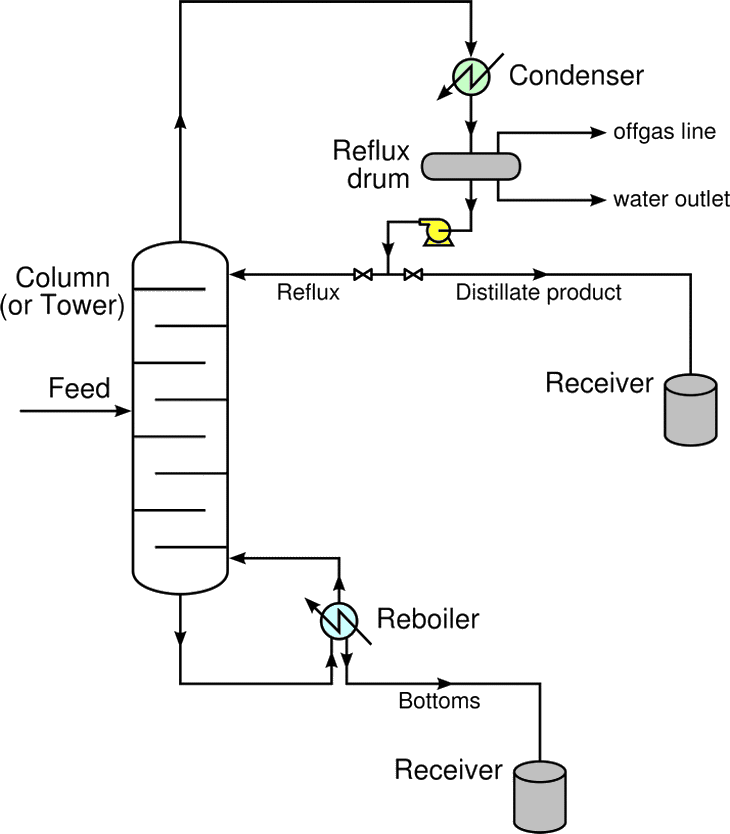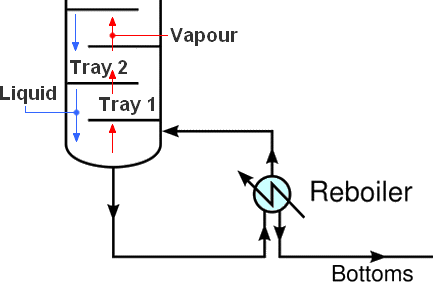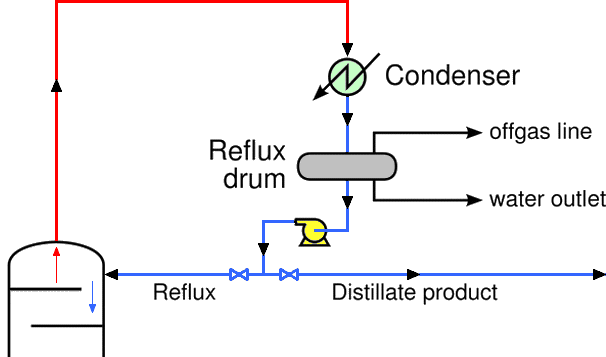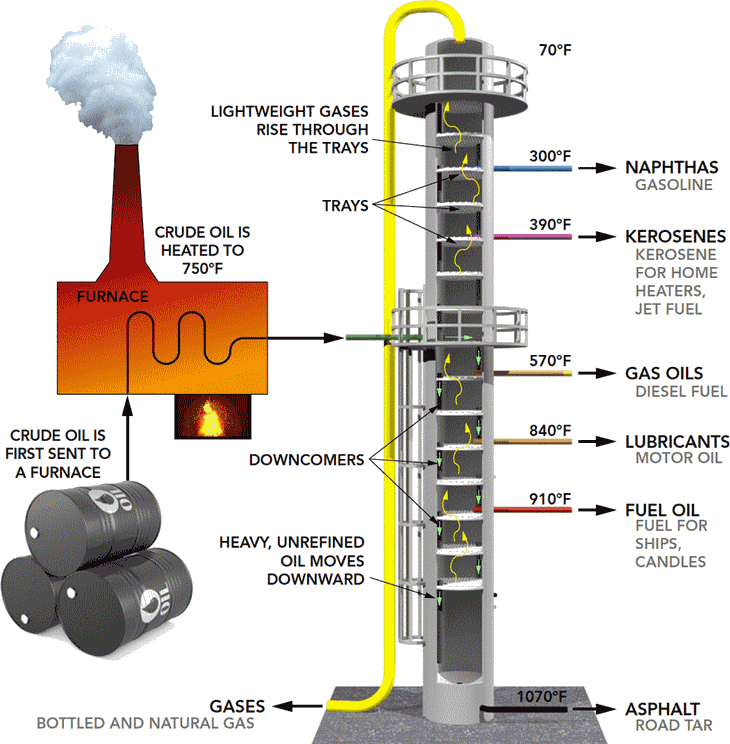 |
Distillation Column |
A distillation column is an essential item used in the distillation of liquid mixtures to separate the mixture into its component parts, or fractions, based on the differences in volatilities. Fractionating columns are used in small scale laboratory distillations as well as large scale industrial distillations.
Types of Distillation Columns
There are many types of distillation columns, each designed to perform specific types of separations, and each design differs in terms of complexity.
Batch Columns
In batch operation, the feed to the column is introduced batch-wise. That is, the column is charged with a 'batch' and then the distillation process is carried out. When the desired task is achieved, a next batch of feed is introduced.
Continuous Columns
In contrast, continuous columns process a continuous feed stream. No interruptions occur unless there is a problem with the column or surrounding process units. They are capable of handling high throughputs and are the most common of the two types. We shall concentrate only on this class of columns.
Types of Continuous Columns
Continuous columns can be further classified according to..
the nature of the feed that they are processing
- binary column - feed contains only two components
- multi-component column - feed contains more than two components
the number of product streams they have
- multi-product column - column has more than two product streams
where the extra feed exits when it is used to help with the separation
- extractive distillation - where the extra feed appears in the bottom product stream
- azeotropic distillation - where the extra feed appears at the top product stream
the type of column internals
- tray column - where trays of various designs are used to hold up the liquid to provide better contact between vapour and liquid, hence better separation
- packed column - where instead of trays, 'packings' are used to enhance contact between vapour and liquid
Main Components of Distillation Columns
Distillation columns are made up of several components, each of which is used either to tranfer heat energy or enhance materail transfer.
A typical distillation contains several major components..
- a vertical shell where the separation of liquid components is carried out
- column internals such as trays/plates and/or packings which are used to enhance component separations
- a reboiler to provide the necessary vaporisation for the distillation process
- a condenser to cool and condense the vapour leaving the top of the column
- a reflux drum to hold the condensed vapour from the top of the column so that liquid (reflux) can be recycled back to the column
The vertical shell houses the column internals and together with the condenser and reboiler, constitute a distillation column. A schematic of a typical distillation unit with a single feed and two product streams is shown below..

Basic Operation and Terminology
The liquid mixture that is to be processed is known as the feed and this is introduced usually somewhere near the middle of the column to a tray known as the feed tray. The feed tray divides the column into a top (enriching or rectification) section and a bottom (stripping) section. The feed flows down the column where it is collected at the bottom in the reboiler.
Heat is supplied to the reboiler to generate vapour. The source of heat input can be any suitable fluid, although in most chemical plants this is normally steam. In refineries, the heating source may be the output streams of other columns. The vapour raised in the reboiler is re-introduced into the unit at the bottom of the column. The liquid removed from the reboiler is known as the bottoms product or simply, bottoms.

The vapour moves up the column, and as it exits the top of the unit, it is cooled by a condenser. The condensed liquid is stored in a holding vessel known as the reflux drum. Some of this liquid is recycled back to the top of the column and this is called the reflux. The condensed liquid that is removed from the system is known as the distillate or top product.

Thus, there are internal flows of vapour and liquid within the column as well as external flows of feeds and product streams, into and out of the column.
Part 1: What are Distillation Columns?
Part 2: Column Internals

Graphic courtesy of Bismarck State College National Energy Center of Excellence